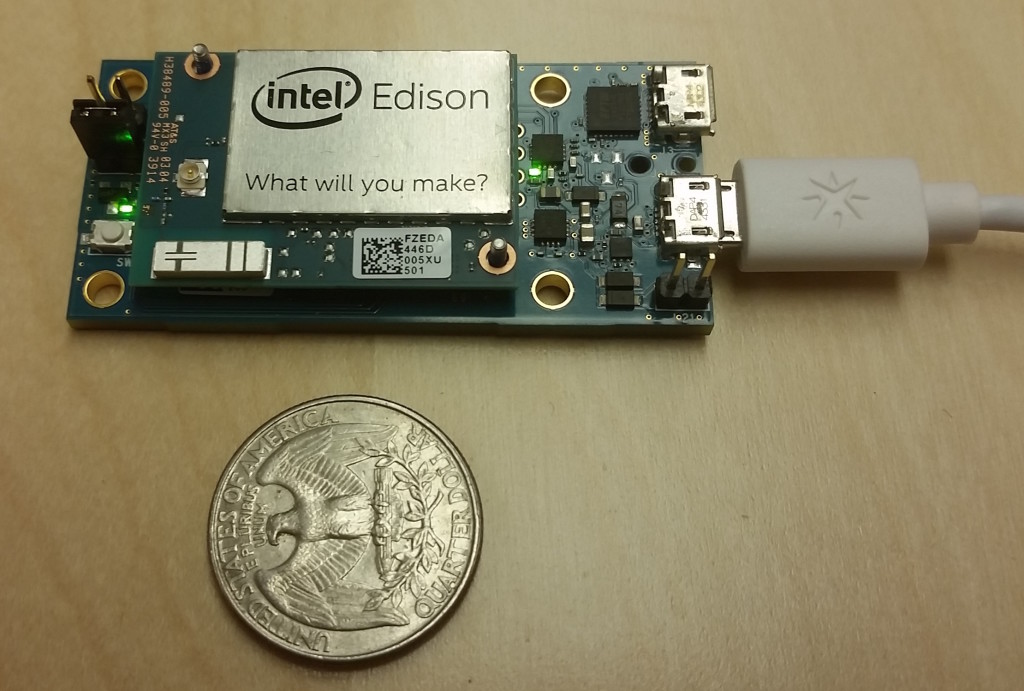Вступление
В моем последнем сообщении в блоге « Интернет вещей», «Сообщения» и «MySQL» я показал, как начать свой собственный Интернет вещей с доски Particle Photon. Эта реализация хороша, но требует постоянного доступа в Интернет (Wi-Fi), поскольку плата Particle Photon не имеет локального хранилища. Если у вас нет надежного доступа к сети (например, в некоторых удаленных местах) или вам нужно что-то очень маленькое для хранения ваших данных, теперь вы можете использовать Intel Edison . Я даже установил MySQL на Edison, что делает его самым маленьким (по размеру) сервером MySQL в мире! Другие варианты включают в себя:
- Raspberry Pi (мой коллега Роэл установил Percona Server на Raspberry Pi )
- Система на базе Android (т.е. Nexus 7: Vadim установил Percona Server на Nexus 7 )
Конфигурация MySQL
Intel Edison — это крошечный компьютер на базе 22-нм двухъядерного процессора Intel Atom, 500 МГц, Silvermont, работающий под управлением Linux (дистрибутив на основе Ubuntu под названием Yocto). Для программирования Edison нам понадобится секционная доска . Варианты включают в себя Arduino-совместимую коммутационную плату (которая включает SD-карту) или небольшую коммутационную плату Intel.
Установка и настройка просты. Я использовал проект « Начало работы с Yocto» в руководстве по плате Intel Edison для настройки и настройки платы. Сначала нам нужно подключиться к Edison через последовательное соединение и настроить sshd и Wi-Fi; когда это будет сделано, мы можем подключиться к Edison, используя SSH.
The MySQL installation is relatively easy as Linux generic binaries are compatible with Yocto Linux (so you do not have to compile anything). There are 2 challenges though:
-
By default the Yocto linux (as well as the official repository) does not include libraries needed for MySQL: libaio1, libcrypto, libssl
- The internal storage is tiny and MySQL 5.7 binaries did not even fit into any partition. I had to remove some “tests” and other stuff I do not need. For the real installation one can use SD card (SD slot is available on some boards).
To install the libraries I’ve used the un-official Edison repositories following the excellent guide: Edison package repo configuration. Setup is simple:
To configure your Edison to fetch packages from this repo, replace anything you have in /etc/opkg/base-feeds.conf with the following (other opkg config files don’t need any changes):
src/gz all http://repo.opkg.net/edison/repo/all
src/gz edison http://repo.opkg.net/edison/repo/edison
src/gz core2-32 http://repo.opkg.net/edison/repo/core2-32Then we will need to setup the libraries:
# opkg install libaio1_0.3 libcrypto1.0.0 libssl1.0.0Finally we can download Percona Server 5.6 and place it somewhere (use basedir in my.cnf to point to the installation path):
# wget https://www.percona.com/downloads/Percona-Server-5.6/Percona-Server-5.6.25-73.1/binary/tarball/Percona-Server-5.6.25-rel73.1-Linux.i686.ssl100.tar.gzPlease note that the latest Percona Server 5.6 depends on the Numa library and there is no such library for Yocto (does not make sense for Edison). So 5.6.25 is the latest Percona Server you can install here.
The simple (and rather useless) benchmark on Intel Edison:
root@edison:/usr/local/mysql# cat /proc/cpuinfo
processor : 0
vendor_id : GenuineIntel
cpu family : 6
model : 74
model name : Genuine Intel(R) CPU 4000 @ 500MHz
...
mysql> SELECT BENCHMARK(10000000,ENCODE('hello','goodbye'));
+-----------------------------------------------+
| BENCHMARK(10000000,ENCODE('hello','goodbye')) |
+-----------------------------------------------+
| 0 |
+-----------------------------------------------+
1 row in set (18.77 sec)Can MySQL make you toast?
The famous MySQL Bug#2, submitted 12 Sep 2002, states that “MySQL Connector/J doesn’t make toast”. With Intel Edison and the Arduino compatible breakout board it is now trivial to fix this bug: not only MySQL Connector/J but also MySQL server itself can make you toast! This can be done via UDF or, in MySQL 5.7, with Query Rewrite Plugins, so you can execute MySQL query:
mysql> make toast;For the actual implementation you can either “hack” an existing toaster to interface with breakout board pins or use a Arduino compatible Robotic Arm. Ok, MySQL, make me toast!
This article originally appeared on the Percona blog by Alexander Rubin.
